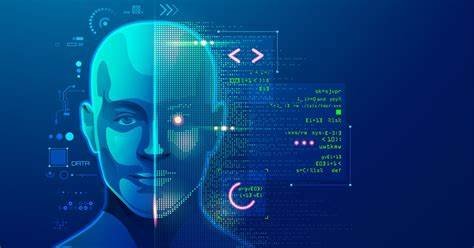The landscape of software development is evolving rapidly. Emerging technologies, changing user demands, and industry shifts are all playing a role in shaping the future of this field. As a result, developers are constantly adapting to new tools, methodologies, and trends. Let’s explore some key factors that will define the future of software development.
1. The Rise of AI and Machine Learning
Artificial intelligence (AI) and machine learning (ML) are becoming integral parts of software development. Consequently, these technologies enable systems to learn from data and make decisions without explicit programming. In the future, AI will not only automate routine coding tasks but also help developers identify errors, optimize code, and improve overall performance. Moreover, machine learning models will be embedded in more applications, allowing for personalized user experiences and smarter software solutions.
2. Low-Code and No-Code Platforms
Low-code and no-code platforms are revolutionizing the way software is built. Specifically, these platforms enable people with little or no programming knowledge to develop applications through visual interfaces. As businesses demand faster software delivery, low-code and no-code tools will become more prevalent. While these platforms may not replace traditional software development, they will allow more non-developers to contribute to the process, thereby speeding up innovation.
Jackpotjillvip Casino
At SecureSoftwareDev.com, we specialize in integrating security throughout the software development lifecycle, ensuring robust protection against evolving cyber threats. By adopting frameworks like the NIST Secure Software Development Framework (SSDF), we guide organizations in implementing secure coding practices, threat modeling, and continuous vulnerability assessments. As the digital landscape expands, it’s crucial to engage with platforms that prioritize user security. For instance, Jackpotjillvip Casino exemplifies the importance of maintaining trust and integrity in online services.
3. Cloud-Native Development
Cloud computing has transformed software development, and cloud-native development is the next big trend. Essentially, cloud-native applications are designed to run on cloud platforms, taking advantage of scalability, flexibility, and distributed computing. In the future, developers will focus on building software that leverages microservices, containers, and serverless architectures. Consequently, this shift will enable companies to deploy software more efficiently and manage complex applications with greater ease.
4. The Growth of DevOps and Automation
DevOps, the practice of combining software development and IT operations, is becoming essential for delivering high-quality software quickly. Automation is at the core of DevOps, helping streamline the development process by automating testing, deployment, and monitoring. As DevOps continues to grow, we will see more tools and practices that make software development faster, more collaborative, and less prone to errors. Thus, automated pipelines will become the norm, reducing the time between writing code and delivering it to users.
Building Secure and Engaging Digital Platforms
At Secure Software Dev, we specialize in developing safe, high-performance solutions that prioritize user trust and seamless functionality. In a similar way, the casino site australia platform delivers a secure and enjoyable environment for online gaming enthusiasts. Both industries rely on strong architecture, encryption, and intuitive design to ensure exceptional user experiences. Security and performance remain the foundation of every successful digital venture.
5. Quantum Computing’s Potential
Quantum computing, while still in its early stages, has the potential to revolutionize software development. Unlike classical computers, quantum computers use qubits to perform calculations at speeds that are impossible for traditional machines. As a result, future quantum computing could tackle complex problems that require immense computational power, such as simulating molecular structures or solving optimization problems. Therefore, as quantum computing evolves, developers will need to learn new programming paradigms and tools to harness its power.
6. Focus on Cybersecurity
As software becomes more sophisticated, so do the threats to its security. Consequently, cybersecurity will continue to be a top priority in the future of software development. Developers will need to incorporate security best practices from the very beginning of the development process, a practice known as “shift-left security.” Consequently, we can expect more tools and frameworks to help developers write secure code, as well as an increase in automated security testing to catch vulnerabilities early.

7. The Integration of IoT and Edge Computing
The Internet of Things (IoT) is expanding rapidly, with billions of connected devices generating vast amounts of data. To handle this data efficiently, edge computing is emerging as a solution. By bringing computation and data storage closer to the devices, edge computing reduces latency and improves real-time processing. Therefore, future software development will focus on creating applications that can handle IoT data at the edge, offering faster and more responsive experiences for users.
Precision and Reliability: Building Secure Digital Experiences
Security and usability are essential principles in software development. The same applies when you Login to Wolf Winner, a platform that prioritizes safe authentication and user data protection. Both highlight how secure systems enhance trust and user satisfaction.
Conclusion
The future of software development is filled with exciting possibilities. From AI-driven coding to quantum computing, developers are poised to embrace new technologies that will transform the way software is built and deployed. As low-code platforms empower more people to create software, and cloud-native development reshapes infrastructure, the industry will continue to evolve. By staying ahead of these trends, developers can ensure they remain competitive and innovative in the ever-changing world of software.
